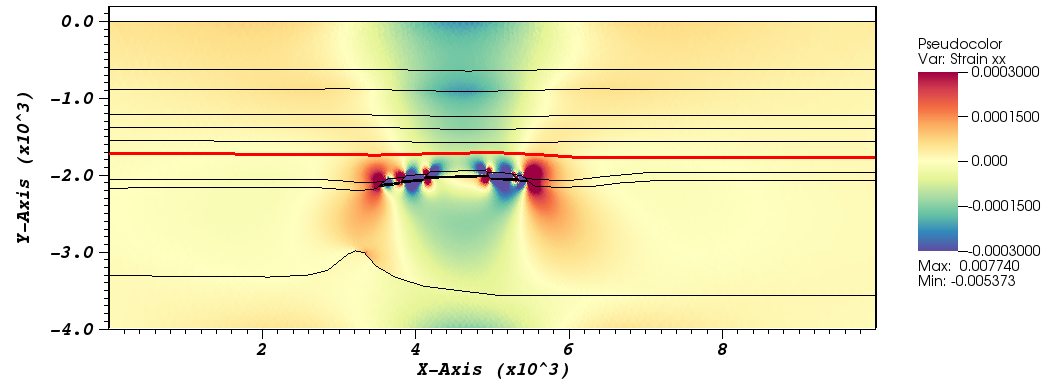Improving the global coherency of the Shared Earth Model using static, dynamic and geomechanics data

Abstract
Petroleum reservoir production modifies the stress state of the subsurface. Petroleum is drawn out, the reservoir pore pressure decreases, and the reservoir rock supports an additional loading. The reservoir is not the only affected area of the field during the production: the layers above (the overburden) and below (the underburden) move. To understand the effect of the reservoir compaction on the overburden and on the subsidence, geomechanical models are built. The rock elastic behavior and the pore pressure change are used to compute the displacement field and the stress changes. In any case, the models of petroleum fields are riddled with uncertainties because the data are sparse and fuzzy and often the results of a long and complex processing. The data uncertainties make the interpretation difficult, or the usage of the prediction made by reservoir models.
To reduce these uncertainties, seismic data such as time-lapse seismic (4D) is used in the geomechanical modelling workflow. 4D seismic are imprinted by the fluid flow in the reservoir, by the strain in the reservoir and in the overburden, and by the rock damaging. In most of the produced fields, the amount of time shifts (the reflectors time-arrival difference) in the overburden is significant. While only a small part of the overburden time shifts is explained by the strain, the velocity change plays a major role. But the relationship between the velocity change and the stress state change due to the reservoir compaction is not known. Microcracks opening is known to have a strong effect on the velocity change. Crack-based models can explain the stress-dependent velocity change in rock samples. Based on synthetics models, different authors predict that the velocity change is anisotropic because the stress change in the overburden is anisotropic. However, the velocity change anisotropy is not considered in the classic time-lapse seismic inversion as only the vertical direction is considered.
The object of this thesis is to extract more information from the data to create a more precise description of the subsurface model. A Mechanical History Matching of time-lapse inverted time strains using Ensemble methods is performed. For this, we first propose to invert for pressure variation in the reservoir to match the time-lapse seismic data. Using the empirical R-factor law, time-lapse time strains are predicted by the mechanical vertical strains. The reservoir pore pressure is updated to match the geomechanical model predictions with the time-lapse inversion results, suggesting that a new compartmentalization of the reservoir is needed to match the 4D information in the overburden. This first approach interrogates on the usage of reservoir simulation data in the geomechanical model. Second, we propose to recover the velocity change anisotropy from prestack time-lapse seismic data. A tomographic reconstruction of the velocity change is performed by realigning the baseline to the monitor. The method is applied to a real case study. The retrieved anisotropic velocity change in the overburden corresponds to a large decrease in epsilon and delta in terms of Thomsen parameters while the vertical velocity change is tiny. Classically, geomechanical models show an overburden stretching corresponding to an opening of horizontal cracks; this is not what we observe in the velocity change anisotropy. To explain the data, we propose a rock-physics model corresponding to vertical cracks with a small aspect ratio (between 10-2 and 10-3) in a water-saturated rock. This second approach interrogates on the assumptions made when the geomechanical model simulation results are compared to the time-lapse seismic inversion results. As shown in the two approaches, a great potential for improving the consistency and reduce uncertainty of the models exists when mixing various data. This work is preliminary and much more work is required to integrate all sources of data into the shared earth model.
Jury Members
Download / Links
- PhD_NicolasMastio_Video
- PhD_NicolasMastio_Thesis
